
-
Featured products
 Perfect Weight Adult Dog Food with Chicken & Vegetables
Perfect Weight Adult Dog Food with Chicken & VegetablesHill's Science Plan Perfect Weight Adult Dog Food with Chicken & Vegetables ia a complete premium dog food for dogs prone to weight gain or who are slightly overweight. This savoury tinned loaf is enriched with ingredients that support healthy weight maintenance & long-lasting weight support.
Shop Now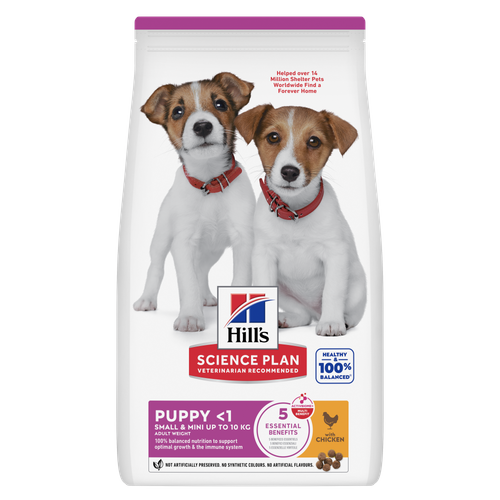 Small & Mini Puppy Dog Food
Small & Mini Puppy Dog FoodHill's Science Plan Puppy Small & Mini Breed Dog Food with Chicken is a complete pet food, specially formulated with ActivBiome+ Multi-Benefit Technology.
100% balanced nutrition to support optimal growth & the immune system.Shop Now Small & Mini Adult Dog Food
Small & Mini Adult Dog FoodHill's Science Plan Small & Mini Breed Adult Dog Food with Lamb & Rice is a complete pet food, specially formulated with ActivBiome+ Multi-Benefit Technology.
Tailored nutrition for the unique needs of small dogs during the prime of their life.Shop NowFeatured products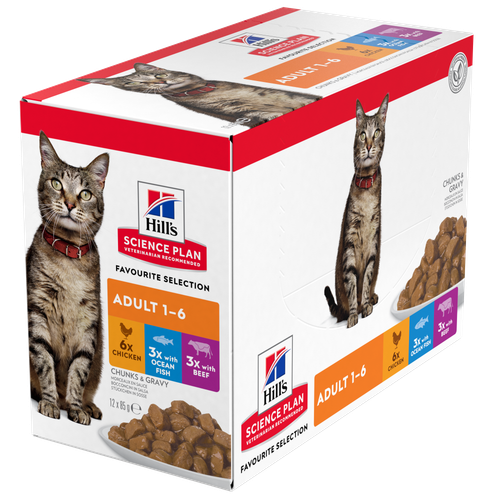 Feline Adult Wet Food
Feline Adult Wet FoodTender chunks in gravy for cats, with high-quality protein to maintain lean muscle. With vitamin E and omega-3s & -6s for healthy skin and balanced minerals to support healthy vital organs.
Shop Now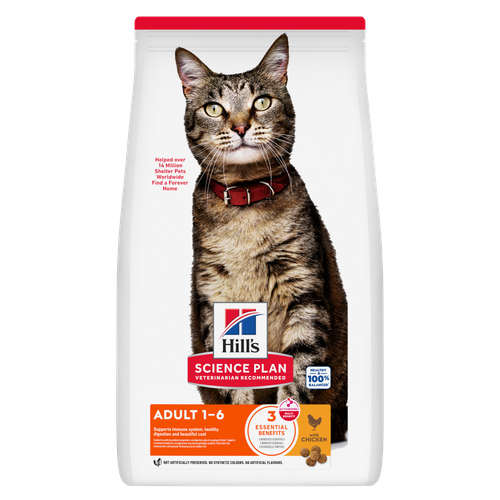 Adult Cat Food
Adult Cat FoodHill's Science Plan Adult Cat Food with Chicken is a complete pet food, specially formulated with ActivBiome+ Multi-Benefit Technology.
This food is specially formulated to fuel the energy needs of cats during the prime of their life.Shop Now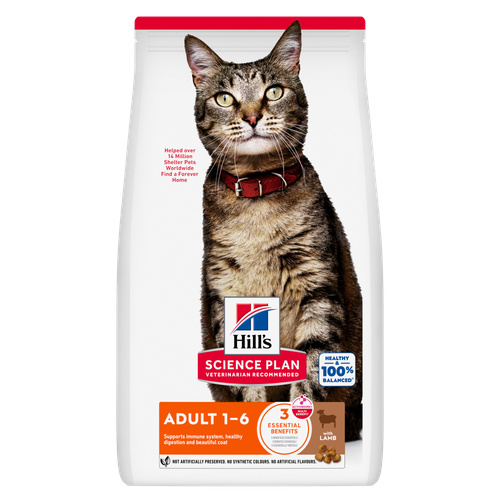 Adult Cat Food
Adult Cat FoodHill's Science Plan Adult Cat Food with Lamb & Rice is a complete pet food, specially formulated with ActivBiome+ Multi-Benefit Technology.
This food is specially formulated to fuel the energy needs of cats during the prime of their life.Shop Now -
Dog
- Dog Tips & Articles
-
Health Category
- Weight
- Food & Environmental Sensitivities
- Urinary
- Digestive
- Joint
- Kidney
-
Life Stage
- Puppy Nutrition
- Adult Nutrition
- Senior Nutrition
Cat- Cat Tips & Articles
-
Health Category
- Weight
- Skin & Food Sensitivities
- Urinary
- Digestive
- Kidney
-
Life Stage
- Kitten Nutrition
- Adult Nutrition
Featured articles Proteins
ProteinsTo make a protein, amino acids are linked together in a long chain. The chain is then bundled into to a three-dimensional structure, like a tangled ball of yarn.
Read More Show some love with wet foods: a great choice for pets with health issues
Show some love with wet foods: a great choice for pets with health issuesShow some love with wet foods: a great choice for pets with health issues.
Read More The Right Diet For Your Pet
The Right Diet For Your PetIn people, the right diet is very important. If you are eating the wrong way for your metabolism, activity level, age and lifestyle you could end up with health issues.
Read More -


When you're a pet parent, your space is no longer your own, which means you have to carefully consider a cat that's best suited for your lifestyle as well as your living space.
Some cats thrive in smaller environments (and it's not always dependent upon the size of the cat), and others, such as those with an abundance of energy, will be happier in larger spaces.
The following breeds are great for those living in flats, but be sure that the feline friend you choose is compatible with you in other ways, too.
Small Living Spaces
If you and your cat will be living in close quarters, look for a cat with an easy-going temperament that is content to be close to their pet parent all the times.

Persians, one of the most popular cat breeds, according to the Cat Fanciers' Association, are a good choice because of their gentle, easy-to-adapt personality. If you entertain in your pad, a Persian will go with the flow and won't harass your guests. However, with Persian's, you may want to budget for higher-than-average veterinary expenses as this breed tends to have health issues. The Ragdoll is also a good choice because, although a large cat, they’re sociable and laid-back, which means they won't get cranky if you're always around. A short-haired option is the Burmese; they’re friendly and get along well with kids and dogs.
Medium to Large Living Spaces
High-energy cats need room to run around, and cats requiring solitude also prefer spacious living quarters that afford them "me time." A fun and loyal breed is the Siamese (but a super scratcher, so look into some DIY scratching post ideas.). Being a vocal cat, a larger living space works best to keep the noise level down. Other active breeds that thrive in larger spaces are the Russian Blue, that love to play fetch, and the Bengal, a chatty cat that stays high-energy throughout life.


Tasty Tips
Adopting a Cat from Shelter
Check with your local shelter for the breeds and types of cats they have. While some purebreds can be more predictable in their nature, adopting a mixed-breed cat can be just as advantageous, and usually with fewer hereditary medical conditions. Often they will exhibit the characteristics of their more dominant breed, but the nice part is that you can really see how the cat interacts in certain spaces. Cats at shelters are often placed in larger rooms for exercise and play. You can see how they interact with the space to get a better feeling of how they would engage at your place. If they tend to stay close to the walls and hides out in sheltered places, they are probably more suited to a smaller flat. However, if you see them zooming all around the room and climbing on things, they have an adventurous spirit and would probably love the space to spread out and explore a large home. No matter what cat you decide to adopt, you can help them adapt to their surroundings by providing the essentials.

Preparing Your Place for a Cat
A loft-style flat with plenty of windows gives your cat many opportunities for running, jumping and gazing out the window. If your flat is small and cozy, they’ll find plenty of places to curl up and snooze. No matter what the square footage, your cat will need a private domain (and so will you). As VetStreet points out, cats love small spaces where they can snuggle up and feel secure, and if your flat is large, it's especially important to provide your cat with spots they can call their own. Try a strategically placed cardboard box or two or space under a table or bed.
Pay special attention to the number of cat-accessible windows. If the flat doesn't have many windows, a balcony or patio door makes a great cat-viewing space, too. (For your cat's safety, secure all screens including patio doors to ensure that they won't fall or escape). If the windows or doors look out onto a busy street or a green space filled with trees, flowers and birds, you've hit the cat jackpot!
Non-carpet flooring, such as hardwood, is easier to keep pet hair-free but requires frequent sweeping. If you go this route, be sure to provide your kitty with plenty of soft sleeping spaces. For example, invest in a plush sofa or chair (big enough to accommodate you and your cat, of course).
Before signing on the dotted line, confirm with the landlord that the flat really is a pet-friendly place. Read the fine print on the lease agreement to see what your responsibility is as a pet owner. Many landlords and leasing agencies require an additional "pet security deposit" for any potential mishaps, and you don't want to be hit with any surprises down the road.
By considering what living space works best for your lifestyle and what the best cats for flats are, you and your furry roommate will live happily ever after!


Christine O'Brien is a writer, mom, and long-time cat parent whose two Russian Blues rule the house. Her work also appears in Care.com, What to Expect, and Fit Pregnancy, where she writes about pets, pregnancy, and family life. Find and follow her on Instagram and Twitter @brovelliobrien.
Related products

Hill's Science Plan Adult Cat Food with Chicken is a complete pet food, specially formulated with ActivBiome+ Multi-Benefit Technology.
This food is specially formulated to fuel the energy needs of cats during the prime of their life.

Hill's Science Plan Adult Cat Food with Lamb & Rice is a complete pet food, specially formulated with ActivBiome+ Multi-Benefit Technology.
This food is specially formulated to fuel the energy needs of cats during the prime of their life.

Tender chunks in gravy for cats, with high-quality protein to maintain lean muscle. With vitamin E and omega-3s & -6s for healthy skin and balanced minerals to support healthy vital organs.
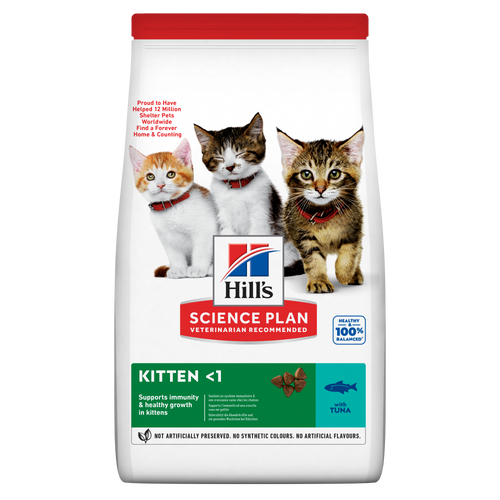
Hill's Science Plan Sterilised Kitten Cat Food with Salmon is specially formulated with ActivBiome+ Multi-Benefit Technology. This food is carefully formulated for the developmental needs of kittens, so they get the best start in life & grow to their full potential.
Related articles

Many human foods are dangerous to cats. Read about 5 of the worst toxic food offenders that can kill your cat - and how much it takes to hurt them.

Cats are very clean creatures and your kitten will spend approximately five hours a day grooming herself. In doing so, they'll pick up any loose hairs from their coat.

From essential vitamins & minerals to different types of meat, learn what to look for when choosing the best cat food for your feline.

Selecting the right food for your kitten is a key to quality nutrition and a long, healthy life. Learn more about how to select the right kitten food.

Put your cat on a diet without them knowing
Our low calorie formula helps you control your cat's weight. It's packed with high-quality protein for building lean muscles, and made with purposeful ingredients for a flavorful, nutritious meal. Clinically proven antioxidants, Vitamin C+E, help promote a healthy immune system.
Put your cat on a diet without them knowing
Our low calorie formula helps you control your cat's weight. It's packed with high-quality protein for building lean muscles, and made with purposeful ingredients for a flavorful, nutritious meal. Clinically proven antioxidants, Vitamin C+E, help promote a healthy immune system.

